
Publisher:
Bonnie King
CONTACT:
Newsroom@Salem-news.com
Advertising:
Adsales@Salem-news.com

~Truth~
~Justice~
~Peace~
TJP
Mar-11-2010 03:09

 TweetFollow @OregonNews
TweetFollow @OregonNews
Water Quality: An Exploration of the Myths, Lies and Misperceptions
Part I of a Two Part Series
Roger Butow Salem-News.com's 'Odd Man Out'
“All is water.”
Thales of Miletus, Father of Western Philosophy
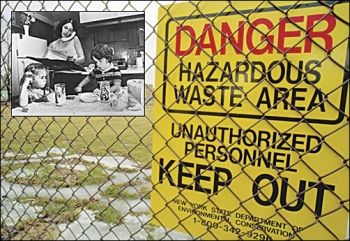 Photo sources: carleton.edu, USGS, ehp.niehs.nih.gov, Steve Peters, Roger Butow, Tim King |
(LAGUNA BEACH) - This is going to be a two part series, so sit down, buckle up and get good and depressed! It’s about some disturbing technical aspects the public knows little about, concerns I’d like to share, and some unpleasant things I’ve learned about the world of water on my (now) 13-year journey. Hope your food is settled.

I always drank it, surfed in and on it, went diving in it, paddled on it, bathed in it, took fish and crab or lobster from it, whatever, but didn’t realize what a beautifully complex yet fragile thing water is. My German immigrant father was a tugboat captain for decades in the LA Harbor, so I’ve ridden around on it a lot too. At 15, I even got Hepatitis A from swimming in an illegal sewage discharge from a ship moored inside the breakwater at Cabrillo Beach in San Pedro. As always in life, the more you learn about a particular subject the more fascinated, and in some cases like this one, the more horrified you may become.
No, this series doesn’t have a happy ending, so though there are some very bright and motivated people looking into the reversal of water quality impairments, addressing the scarcity of water itself, the future looks pretty much dystopian. Earth is like a big life raft, and due to global consumerism and increased population, our water-related problems are going to increase, not decrease as time goes by.
I’m certain that by 2025 we’ll be experiencing some gut-wrenching calamities that will require tough choices, not to mention soaring shortages of resources we now take for granted. I’m not sure if Ted Turner is right, that we’ll become human cannibals by then like flesh eating zombies, but we will be cannibalizing each other’s food and water sources. Eating people, the emerging “zeitgeist” might come later, say by 2026 or so.
Source unknown
We’re gobbling and slurping up ALL of our planet’s natural resources in an exponential way. Only 1% of Earth’s water is potable (fresh for drinking) and our wastewater treatment systems aren’t really cleaning or reducing what they receive down to safe ecological levels for re-use.
A large portion of the globe’s 3rd world countries don’t even have waste treatment capabilities, instead they rely on streams or septic systems to settle, cleanse and/or disperse pollutants.
Scientific progress has improved analytical lab methodologies and private industry (gotta love capitalism for that) has produced some increasingly sensitive detection technologies, especially smaller, more readily portable ones.
Combined with refined, long-range epidemiological studies, there’s both good news and bad news regarding our water supplies and projections, what I call “Water on, Water in, Water out”---here in America and throughout the world.
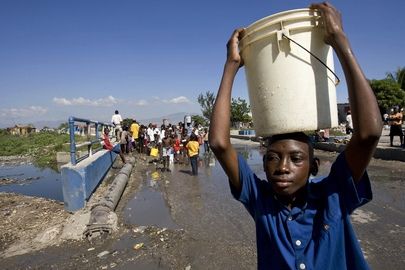 Boy carries precious water days after Haiti's massive, deadly earthquake |
The recent earthquakes in Haiti and Chile, if the media are covering them adequately enough and informing their public fully, trigger grave and alarmingly righteous concerns within the water quality community. It’s not just the availability of potable (drinking) water. These catastrophic conditions hasten anxiety about the disease vectors surrounding stagnant water, especially human wastewater. Included in such waters are deadly parasites that also find safe harbor. As they proliferate the hazards become exponential and overwhelming.
The evolving and improved portable sampling methods, plus the revised protocols and new age devices, combine to provide a better understanding of sources and enviro-impacts, including those that affect human health and safety. We have advanced, almost instantaneous, digital field analyses that can help diagnose and hopefully head off contagious and/or infectious water-borne casualties being added to the already high dead body counts from the initial traumatic event. These technologies and procedures are called Best Emerging Technologies (BETs) in the world of water.
Previously, subsequent complicated lab analyses and cultures took days, even weeks, but now we get accurate readings of contaminant concentrations a lot quicker. In emergency situations, especially tropical zones where microbes party on like it’s 1999, even the sampling devices and destination labs themselves can become compromised. This is why monitoring and test results always have an iterative, a redundancy factor built into them.
Multiple samples taken over a specific time period can sometimes reveal diurnal changes, that is increased or decreased concentrations of pollutants or hazardous microbes can vary from sunrise to sunset. Things like temperature and ultraviolet rays from the sun can make dramatic differences. More of that topic in Part II.
 Cryptosporidium parvum |
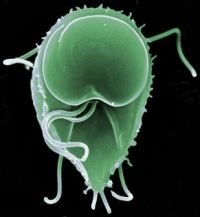 Giardia Lamblia genome |
Though we seemed to have defeated or pushed back the probability of mass epidemic or even pandemic from water-borne plagues, microbes can and do mutate. Nowhere is that more readily possible than in non-flowing, unmoving fresh water with the detritus of feces, be it human and/or animal. Open oceanic environs are hostile to many of these microbes, although brackish estuaries ( mixing salt and fresh) do have grievous potential. Cryptosporidium parvum and Escherichia coli (e. coliform), and Giardia are just a few of the known ones most commonly publicized.[1][2]
Ultraviolet (UV) light amazingly destroys a lot of these beasties, which is also why it’s a primary part of the treatment train, the emerging and very advanced water treatment system infrastructural component. I’m sure that both Haiti and now Chile have in place portable systems for just this purpose. These treatment trains have been downsized so that even the private homeowner can have filters, reverse osmosis (R/O) and UV components installed as part of a personally improved water quality system for their families, pets and guests.
Not just BETs, but also Best Available Technologies (BATs) and Best Conventional Technologies (BCTs) can find no better final exam than those that present themselves under demanding emergency field conditions.
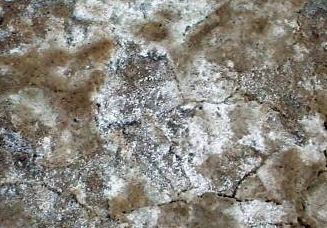 Close up of the mineral salts on the stream bank of Silver |
The good news is that we’re becoming more aware of what’s in our potable (drinking) water, but ironically even that good news is almost all bad. The recent media headline cases of e. coli provoked illnesses among a widespread demographic. One important factor is critical: Those with (a) under-developed immunity systems (like children), (b) the elderly with their resistance eroding, or (c) those with compromised health (like HIV/AIDS) succumb to microbial invasions more readily. What might cause a 20-year old surfer diarrhea and flu-like symptoms can kill these 3 categories.
In or on our leafy vegetables irrigated with untreated or improperly cleansed water, many illnesses fatal, we thus peel back the mythologies of safe reclamation water for irrigation of landscape and produce. The wide and complex gamut of contaminants that are being revealed in many cases are the result of subterranean infiltration into aquifers from surface-generated pollution. Once they mix, they can create complex compounds that migrate and are even more troublesome to isolate and remove. Farmers pump these aquifers, usually at shallow depths to save energy and drilling costs.
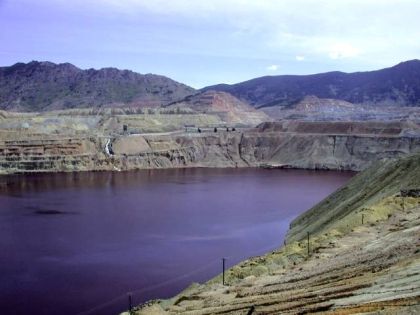 The Berkeley Pit. This open pit mine ceased operations in 1982 and is now |
Depending on how close to the surface these contaminated aquifers are positioned or “perched”, the usually reliable shallow wells for rural areas, the ones that farmers historically rely upon for their families and animals, for agricultural purposes are now trying to pump deeper in hopes of finding clean water. This is not a cheap or even guaranteed process which can be in vain; factors like constant replenishment or reintroduction by new sources negating farmers' strategies.
Testing sensitivity or threshold presence levels have improved somewhat, only to reveal ground and surface waters in extreme distress, chemically altered and leading to eventual impacts we’re unable to predict. Heavy and light metals, good for you in small quantities, also present health risks. Selenium, another chemical not readily found in its natural state, is also showing up in unacceptable concentrations[3].
The fiduciary, the trusting relationship between consumers and their water providers is breaking down as well. The public is not only confused, but as a result of becoming a more consciously fit country, we know that you are what you eat---and drink. These pathogenic substances, biological agents that can cause illness or death in their host, are rife in watercourse and aquifer distribution, have become ubiquitous, systemic and endemic.
An entire new category has been created recently to reflect our increased scientific analyses and detection abilities. Termed “Contaminants of Emerging Concern,” many CECs are inorganic compounds cooked up in laboratories, can be key ingredients in household or industrial products.
Viktor Schauberger Austrian scientist and inventor aka “The Water Wizard”
Examples which include arsenic, barium, chromium, lead, antimony, mercury, cyanide, asbestos, copper and more are mostly metals and salts. Zinc and selenium, though necessary for many life forms' cellular growth and also common in health supplements, can be added to that list if ingested in large doses.
These CECs include Pharmaceuticals and Personal Care Products (PPCPs) that are increasingly being discovered by monitoring of our nation's waters, albeit at very low concentrations.
Pharmaceuticals refer to prescription and over-the-counter therapeutic drugs and veterinary drugs. Personal care products refer to products used for personal and cosmetic reasons such as soaps, fragrances, and cosmetics[4].
The indiscriminate use of common household pesticides, often broadcast near surface runoff drainages, are showing up in our streams and lakes, the concentrations in amounts that eradicate the micro and macro-invertebrates that sustain the fry of our fish stocks.
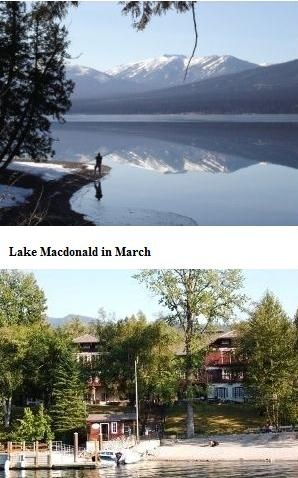
Contaminants like the family of pyrethroids are finally being assessed and the news isn’t good[5].
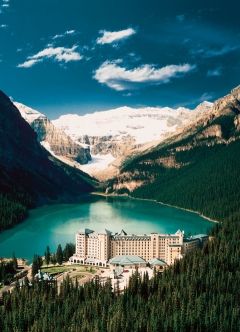 Fairmont Lake Louise |
Montana can no longer boast of being “The Last Best Place.”
And before I get a bunch of hateful comments, don’t get me wrong: I’ve spent a lot of time up there over the past 25 years, especially the Northwestern corner, around West Glacier, and like a lot of Americans, I find its majestic beauty is stunning; exquisitely breathtaking.
Only Banff National Park near Calgary, Canada (an extension of the same Rocky Mountain Range) comes close, for my money. It’s on the eastern side of where the Olympics took place in Vancouver.
Lake Louise, in the Park, is eerily similar to Lake MacDonald in Glacier Park.
Understanding that the saturated, electric blue color of these lakes is due to the same glacial grinding processes doesn’t diminish your awe.
Sadly, I felt the same compression of civilization I do at Glacier, what with all of the tourists, buses, etc. While visiting Banff last year for the first time, the Fairmont Chateau at the base of Lake Louise is a lot more invasive and un-natural looking than the Lodge at Lake MacDonald. In fact it dominates visually what should have been inviolate.
The Canadians may not be polluting Lake Louise as much as Glacier or the Flathead, but the eyesore of the upscale, towering, snobbish Fairmont Chateau lessens the experience---Not to mention lessens your wallet substantially.
Plus it was kind of ostentatiously creepy; reminded me of “The Shining,” I kept expecting Jack Nicholson to come through the front entrance with an axe. I crossed my fingers hoping he’d just demolish the place instead of sending kids screaming “Red Rum” (murder spelled backwards) throughout the hallways.
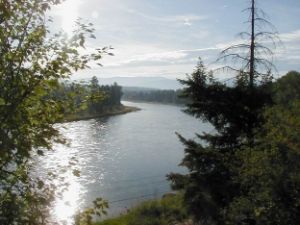 Kootenai River near Libby |
Unfortunately, in my mind, there are no “Last Best Places” because we as a species either have ruined or will have ruined them all in the next decade. All the more reason to ring the alarm bell now, I say, so we can possibly save something somewhere, oh lord have mercy, anywhere.
I’ll be egalitarian... there’s blame enough for every state and nation to dwell upon, and I’ll include Nevada, California and others further along. Hit the hyperlinks I’ve included; you’ll find how widespread these problems really are.
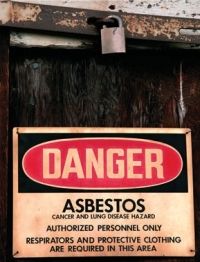 Libby, Montana |
GOOGLE Libby, Montana, about 80 miles west of Flathead Lake: It’s the poster child for our asbestos industry gone bad. The amount of asbestos that has been introduced into the region, by the evil empire W. R. Grace Corporation, has polluted the air, land and surface water.
The human cancer clusters around Libby were at first misunderstood, then low-balled or ignored, the subsequent asinine denial by the guilty parties was an absurdity. Finally, in federal courtrooms the impacted locals won---But at the price of incredible death tolls and life-shortening illnesses[6].
It’s not much good to win a pile of money for your Dad or Mom if they’re already on critical care, half-dead or underground. Insult to injury, the W.R. Grace bozos have been working on reducing the settlement dollars and their post-litigation cleanup and mitigation responsibilities.
Maybe I’m getting conservative in my old age, but it does seem as if both responsibility and accountability, the elements that make for a better America and American, do not apply to corporate entities.

East of Libby lies the Flathead Valley near Glacier Park, and in 2006 they tested about 40 privately owned wells between Kalispell and Whitefish, found 2/3 of them unfit for human OR animal consumption due to high bacterial counts.
The aquifer in this basin is perched very high, and there have been quite a few lawsuits against developers recently because they’ve built basements or footings and retaining walls practically down to the subterranean flows. Floods and mildew aren’t uncommon if these newer structures are in the low spots. Most of the farmers and natives knew better; their homes are on the mildly rolling hilltops.
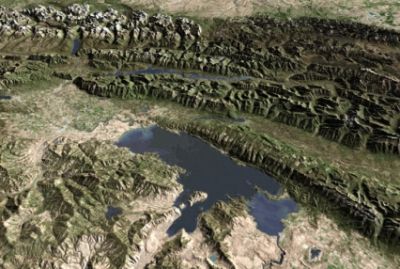 Flathead Lake |
The recipient of excess surface and groundwater runoff is the majestic Flathead Lake, the upper portion placed by the Feds on the dreaded 303 (d) Impaired Water Body List due to high counts of bacteria resulting from nutrient overloading (eutrophication), not to mention the historical use of herbicides and pesticides, runoff from the mining industry that raped the land and killed the streams. It is the largest freshwater lake west of the Mississippi.
Historically, rural residents, including farmers, ranchers and miners, dumped their waste into the streams or lakes directly. Their animals' feces and urine washed off from the individual land parcels. Then many began using septic tanks and/or spreading fields, but if closer than about 800 feet, then they’re still at an unsafe distance. These systems only put off the inevitable because now they’ve contaminated the soil, and the slow moving, subterranean aquifers that osmotically drain into their rivers and lakes eventually transport the contaminants.
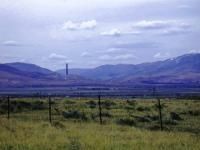
Smelter tower in Anaconda. |
Montana has no state sales tax, they fight taxes or anything akin to them every time it comes up. Yet mechanisms like such taxes, or assessment/bond districts can provide funds for new-age, state-of-the-art waste treatment plants. These facilities can clean water up to what’s known as 3rd stage “tertiary treatment” prescriptions, to mandated Clean Water Act potable compliance standards. Considering that the discharges from these plants would go directly into once-upon-a-time pristine waters, this should be the primary goal in Montana.
The cheaper, less efficient “secondary treatment,” isn’t up to potable standards, and it’s good for only open space, reclaimed landscaping water, not agricultural irrigation. Many other areas in the USA have only secondary treatment plants, and part of the failure of water district officials and politicians is their refusal to give their residents the tough news: Yes, it’s going to cost a lot more, but we’ll conserve water, have more of a finite resource to recycle, and more importantly ANY water that comes out of the ground or your tap is fit for human consumption.
Southeast of Missoula, near Butte, you can take the Anaconda exit and as you approach town you see an eyesore: A veritable black mountain of ominous slag, a humongous pile of “overburden,” the abandoned contaminants open to the the air, soil and water. They've basically created a death zone, just a useless rock pile of mining detritus that contained no minerals for Anaconda Copper to harvest so it's basically an above ground, public dump. It’s as if the monolith of “2001: A Space Odyssey” suddenly appeared in its ground up state, in plain sight, right there in rural America. The U.S. Environmental Protection Agency (EPA) designated the local smelter, owned by Atlantic Richfield (ARCO) a Superfund Cleanup site in 1983. In 1997 the locals tried hauling some off for a golf course sub-base, but by my personal observations in April of 2006 they hadn’t made much of a dent in the pile.
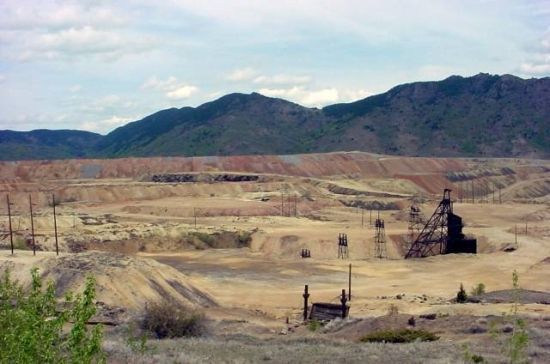
All over this and other mineral-rich states, the harvesting of precious metals like gold, silver and copper require the unnatural introduction of caustic chemicals. The byproducts of the mining processes themselves are often lethal contaminants. “These mining operations usually lead to cyanide and other toxins eventually getting into the surrounding land, surface water, and groundwater. In some cases, acid mine drainage—in which the sulfides in the now-exposed rock waste combine with water to form sulfuric acid—turns groundwater more toxic than battery acid. As for cyanide, an amount of it equivalent in size to a grain of rice will kill a human, and very low concentrations of cyanide in surface water will kill fish.”[7][8]
One Bozeman female activist suggested that the title of Robert Redford’s 1992 film referring to the Blackfoot River near Missoula be changed to “A Turd Runs Through It” due to the poor management practices and chronic sewage spills by the sanitation districts in the area. The same Montanans who have promoted their state as “The Last Best Place,” are lowering their expectations along with the now savvy hunters and fishermen.
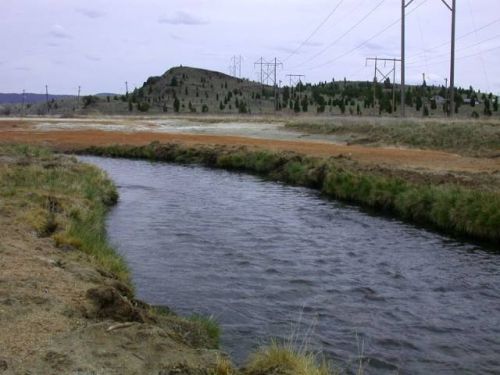 Silver Bow Creek flows westward toward Anaconda and the Clark Fork River headwaters. |
Much of this comes from the chemical industry, folks like DOW and DuPont. Who said “Better living through chemistry?” Well, our good friends at DuPont, yes, they’ve definitely made a difference in our lives, and not always a good one. DuPont is the largest corporate air polluter on the North American continent. They and their attorneys spend much of their times these days in courtrooms, and I assume pass those expenses on to consumers!
Estrogen and progesterone from birth control pills or menopausal hormone treatments are now markedly present, so no need for the ladies to visit their doctors anymore. This is a known source of increased female population growth numbers, bizarre mutations and hermaphrodites (exhibiting characteristics of both sexes) found in aquatic species nationwide. Then again, as one senior citizen in a Laguna Hills California retirement community remarked: “I don’t need a Viagra prescription or spend money on the pills. Now it’s in my drinking water for at no additional cost!”
Quite a few of the teratogenic (birth defects), mutagenic (mutants) and carcinogenic ingredients are like the solvent and gasoline additive MTBE which migrates readily through these aquifers, and many similar compounds are difficult if not impossible to remediate cheaply, let alone safely. Our science has become more refined, more sophisticated, and studies of these newly-introduced organic and inorganic chemicals and compounds can now ascertain long term exposure risks. We’re just beginning to see the long view, the dramatic negative impacts of water-borne contamination on both humans and environmental resource health respectively.
Surfactants, chemicals found in detergents, are unstable, yet are ubiquitous in our waterways. They break down the molecular membrane barriers between substances that normally wouldn’t mix. That’s how they remove dirt in your laundry. These couplings create nightmares for water treatment pros[9].
Volatile Organic Compounds, generally referred to as VOC’s, are a family of beasties that form the basis for many of the lawsuits now in progress by former and presently serving military personnel in the USA.
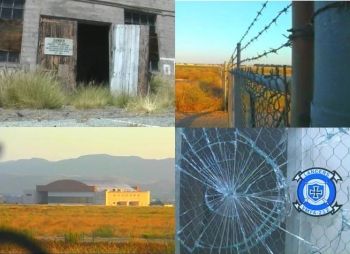 Images of California's contaminated & closed MCAS El Toro |
Bases at Camp Lejeune (N.C.) and former MCAS El Toro are classic examples of emerging science revealing the extent to which potable water (drinking, bathing, etc.) and aquifer soil can become contaminated beyond previous detection capabilities[10].
As Salem-News readers know, there are numerous, very vibrant working groups across the country beginning to bond on this issue. As they network and increase the pressure on Washington to stop the denial, they’re intent to get on with open admission regarding the health impacts.
Realistically, where do you haul thousands of cubic yards of highly contaminated soil from Superfund facilities, or where do you pump hundreds of thousands of gallons of the now useless water beneath it? How long can our landfills sustain this chemical assault, absorb this kind of water quality abuse? MCAS El Toro, which you’ve read a lot about in this news service for the past few years, is a poster child for this conundrum: Complex synthetic compounds in abundance to darken our beautiful spacious skies and nourish our amber waves of grain.
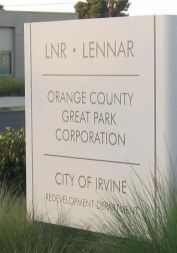
Adding insult to injury, older landfills relied on less efficient linings to halt or detain aquifer infiltration. Newly designed dumpsites are quite a bit better, but in places like Orange County many have been closed, prompting massive exportation of contaminated, hazardous waste. Odd as it sounds, exporting is cheaper than cleaning this insidious crap up.
Ironically, like the movie “Poltergeist,” developers often gobble up these abandoned parcels and build residential subdivisions over them. LENNAR CORPORATION (the slime de la slime of developers) is infamous for this tactic nationwide. Usually local governance, anxious for tax coffers to refill in a calamitous economy, rubber stamp eco-remediation, then perform the bare minimum necessary to get their projects approved. One tactic is to build over the old roadways and easements, turn the hazardous acreage into open space for native flora and fauna. This is paradoxically called “mitigation,” when it just ignores what lays below the surface like a bomb ticking, waiting for release into our environs.
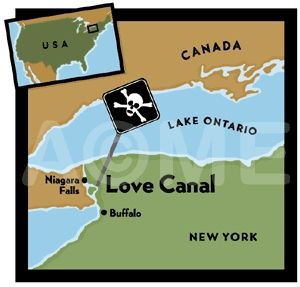
They don’t worry, these developers and the political structure they prop up, they don’t live anywhere near these subdivisions and they’ll be long gone when the you-know-what hits the ecological fan.
If the subterranean aquifer beneath these abandoned and partially remediated former landfills is breached, the pollutants run amok, may discharge into creeks or rivers, obviously contaminating beyond repair any operating wells in the vicinity.
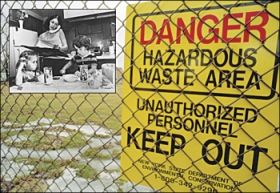
As for the ugly beasties removed offsite, first you have the outright inherent dangers of transporting by train or truck these National Toxic Rule (NTR)[11] constituents over public, common land. If the trains that remove them derail or the trucks carting them crash, whatever lucky community is adjacent to any of these scenarios gets to feel the love, as in “Love Canal.”
Second, the eventual long-term ecological impacts of contaminated waste are being shifted to desolate, difficult to reach places that are “out-of-sight, out of mind.” Good morning, Nevada! Guess what? You’re the proud parents, the honored depository of our wicked, cheapskate ways. Would you like some more of that electronic component waste (called e-waste)? Howsabout you, Arkansas, want our spent nuclear rods from the San Onofre Nuclear Power Plant?
Here in California, we just find a money-hungry neighbor to fob it off onto, and as our beloved, computer-generated and celluloid hero dumbo, das groppenführer Uncle Arnie S. always mumbles, “No problemo.”
(To Be Continued in Part II)
FYI: If a project near you has some interesting enviro-aspect(s) you think is/are worthy of Salem-News.com coverage and our readers attention, feel free to contact Roger with a very brief synopsis.
- [1] en.wikipedia.org/wiki/Cryptosporidiosis
- [2] en.wikipedia.org/wiki/Giardia_lamblia
- [3] en.wikipedia.org/wiki/Selenium
- [4] berkeley.edu/news/media/releases/2010/02/02_household_pesticides.shtml
- [5] epa.gov/waterscience/criteria/aqlife/cec.html
- [6] cnn.com/2009/US/06/17/montana.asbestos/
- [7] cfpub.epa.gov/ncer_abstracts/index.cfm/fuseaction/display.abstractDetail/abstract/748
- [8] en.wikipedia.org/wiki/Berkeley_Pit
- [9] usgs.gov/newsroom/article.asp?ID=2403
- [10] en.wikipedia.org/wiki/Volatile_organic_compound
- [11] epa.gov/lawsregs/laws/tsca.html
 Launched in 2010, Odd Man Out is the creation of Roger von Bütow and his OMO columns are written exclusively for Salem-News-com. Born and raised in the LA Harbor area, son of a German immigrant father, he's been in Orange County for 45 years and is a 38-year resident of Laguna Beach, Ca. In 1998, he began his professional career in environmental review processes (CEQA, NEPA, MND, MND and EIR/EIS). He's a rare mix of cross-trained builder, writer and consultant as he brings his extensive construction experiences dating back to 1972 into his eco-endeavors. He has tremendous field and technical expertise in successful watershed restorations, plus wastewater, urban runoff, water quality monitoring/improvements and hydrologic mechanisms. He's built everything from commercial spas to award-winning private residences, and provided peer review and consultant analyses for single homes, subdivisions and upscale resorts.
Launched in 2010, Odd Man Out is the creation of Roger von Bütow and his OMO columns are written exclusively for Salem-News-com. Born and raised in the LA Harbor area, son of a German immigrant father, he's been in Orange County for 45 years and is a 38-year resident of Laguna Beach, Ca. In 1998, he began his professional career in environmental review processes (CEQA, NEPA, MND, MND and EIR/EIS). He's a rare mix of cross-trained builder, writer and consultant as he brings his extensive construction experiences dating back to 1972 into his eco-endeavors. He has tremendous field and technical expertise in successful watershed restorations, plus wastewater, urban runoff, water quality monitoring/improvements and hydrologic mechanisms. He's built everything from commercial spas to award-winning private residences, and provided peer review and consultant analyses for single homes, subdivisions and upscale resorts.
View articles written by Roger Butow Read Roger's full biography on the Salem-News.com Staff Page
His resumé is extensive, try an online GOOGLE search of his personal journey and historical accomplishments. His consultation fees are reasonable and if you've got a major project that alarms you, that needs creative intervention, then he's your man. His credentials and "CV" can be provided upon request.
Contact him at his office: (949) 715.1912 or drop him an email: rogerbutow@cleanwaternow.com
Articles for March 10, 2010 | Articles for March 11, 2010 | Articles for March 12, 2010



Quick Links
DINING
Willamette UniversityGoudy Commons Cafe
Dine on the Queen
Willamette Queen Sternwheeler
MUST SEE SALEM
Oregon Capitol ToursCapitol History Gateway
Willamette River Ride
Willamette Queen Sternwheeler
Historic Home Tours:
Deepwood Museum
The Bush House
Gaiety Hollow Garden
AUCTIONS - APPRAISALS
Auction Masters & AppraisalsCONSTRUCTION SERVICES
Roofing and ContractingSheridan, Ore.
ONLINE SHOPPING
Special Occasion DressesAdvertise with Salem-News
Contact:AdSales@Salem-News.com

Terms of Service | Privacy Policy
All comments and messages are approved by people and self promotional links or unacceptable comments are denied.
Vic March 11, 2010 11:48 am (Pacific time)
Great article ! The one percent figure was surprising ! Looking forward to Part 2 !
Daniel Johnson March 11, 2010 6:39 am (Pacific time)
Roger: Excellent overview and analysis. We need to go on to the second level of Globalization. By this I don't mean of capitalism; I mean of people. The air and the water belong to everyone but since time immemorial, people (primarily businessmen) have been treating the atmosphere and the rivers and oceans as private sewers. They're so huge, that my little bit of effluent can't possibly make a difference went the thinking. But it does. That attitude in combination with capitalism's ethic of having little or no care for anyone else, profit not being an important thing but the only thing. The air borne contaminants that create acid rain, for example, have no respect for state, provincial or international borders. It's worse with rivers. What we dump in at one place, affects everyone who lives downstream--and they get no benefit from the production. So the sooner that we in the developed world begin to realize and act on the knowledge that we're all in this together, the sooner we can be more optimistic about our future.
[Return to Top]©2025 Salem-News.com. All opinions expressed in this article are those of the author and do not necessarily reflect those of Salem-News.com.